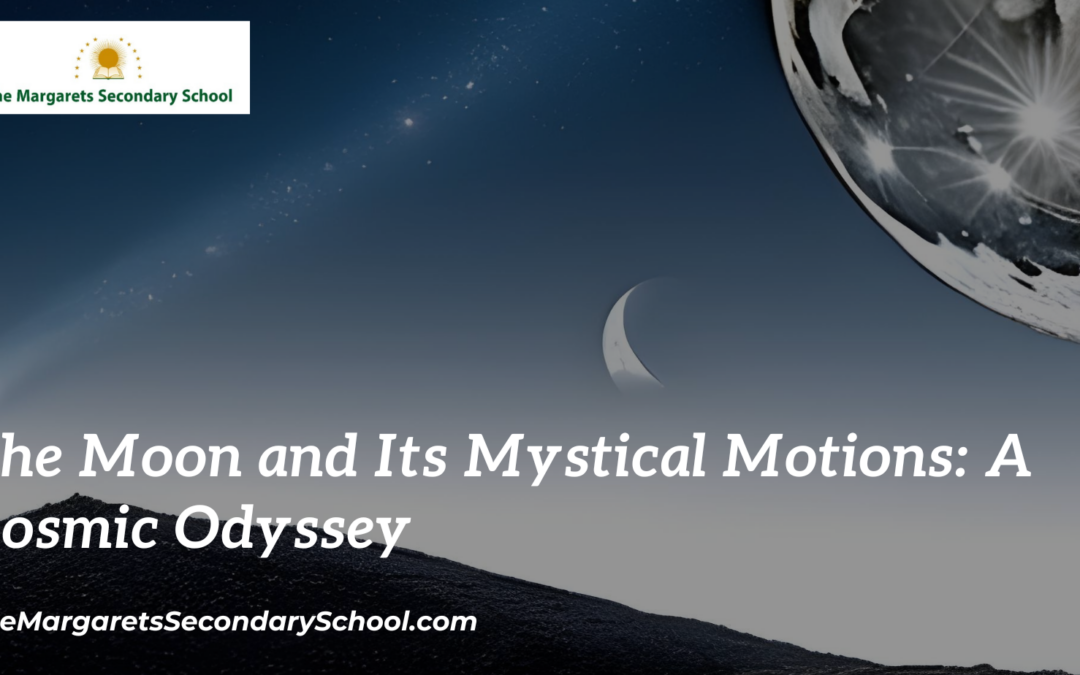The Moon and Its Motions
In the tapestry of the night sky, the Moon stands as a luminous sentinel, casting its silvery glow upon Earth. As our closest celestial neighbor, the Moon has captured human imagination for millennia, inspiring myths, poetry, and scientific inquiry. Its motions across the sky are a mesmerizing dance that reveals not only its inherent beauty but also the intricate mechanics of our solar system.
A Companion in the Cosmos
The Moon, Earth’s only natural satellite, has been a constant presence since time immemorial. Its gravitational pull tugs at our planet, giving rise to ocean tides and affecting the very rhythm of life on Earth. But its influence extends beyond tides; the Moon’s motions are a cosmic choreography that have captivated astronomers and philosophers for centuries.
Orbit and Synchronization
The Moon’s orbit around Earth is elliptical, bringing it closer and then farther away in a regular cycle. This elliptical path, combined with Earth’s axial tilt, results in the Moon’s changing position in the sky throughout the year. As it orbits Earth, the Moon also rotates on its axis, but interestingly, it rotates at the same rate that it orbits Earth, causing the same side of the Moon to always face our planet. This phenomenon is known as tidal locking and is a result of gravitational interactions.
Phases of the Moon
One of the Moon’s most enchanting motions is its progression through various phases. The Moon’s appearance changes due to the varying angles at which the Sun, Earth, and Moon are aligned. When the Sun is directly behind the Moon from our perspective, we observe a new moon, with the Moon’s far side illuminated. As the Moon orbits Earth, we see different fractions of its illuminated side, giving rise to crescent, quarter, gibbous, and full moon phases.
Eclipses: Celestial Alignment
The Moon’s motions also give rise to two remarkable celestial events: solar eclipses and lunar eclipses. A solar eclipse occurs when the Moon passes between the Earth and the Sun, temporarily obscuring the Sun’s light. On the other hand, a lunar eclipse transpires when the Earth comes between the Sun and the Moon, causing Earth’s shadow to fall upon the lunar surface. These events are not only awe-inspiring visual spectacles but also powerful demonstrations of the intricate spatial relationships within our solar system.
The Exploration of Luna
The Moon’s mysterious motions have beckoned humans to explore its surface and unravel its secrets. In the mid-20th century, the Apollo missions marked a pivotal moment in human history as astronauts left their footprints on the lunar soil. The samples they collected provided invaluable insights into the Moon’s formation and evolution.
The Future of Lunar Exploration
Today, the Moon continues to captivate our curiosity, with plans for future lunar missions aimed at establishing sustainable human presence on its surface. These missions hold the promise of deeper scientific understanding, technological advancements, and even potential stepping stones for human exploration of Mars and beyond.
A Cosmic Muse
The Moon’s motions are a testament to the symphonic beauty of the cosmos. Its rhythmic dance across the sky is a reminder of the interconnectedness of all celestial bodies and their influence on the fabric of our lives. From shaping tides to inspiring poetry, from guiding ancient sailors to igniting the flames of scientific exploration, the Moon remains a celestial muse that transcends time and culture, forever weaving its magic into the story of humanity’s relationship with the universe.





